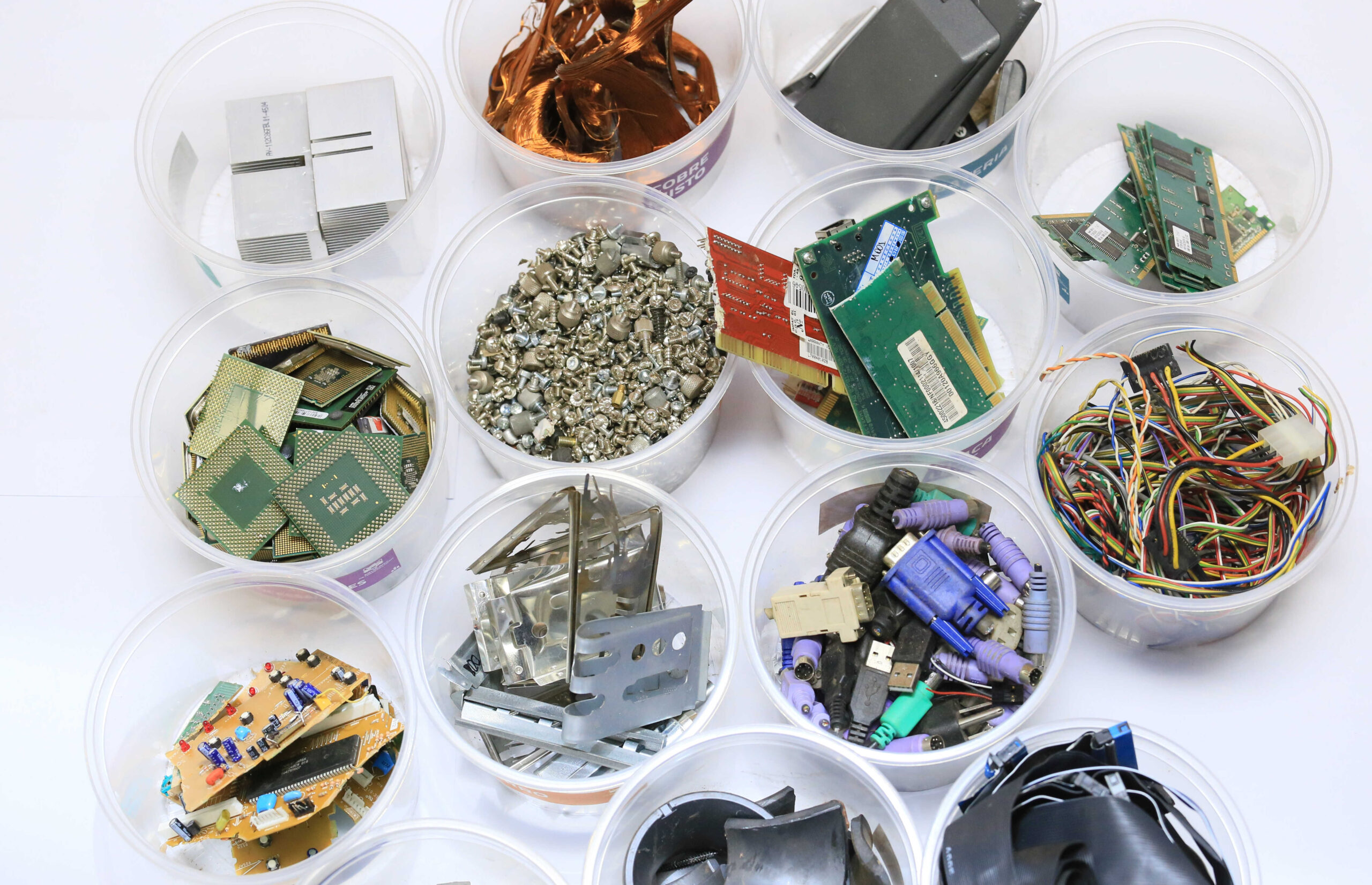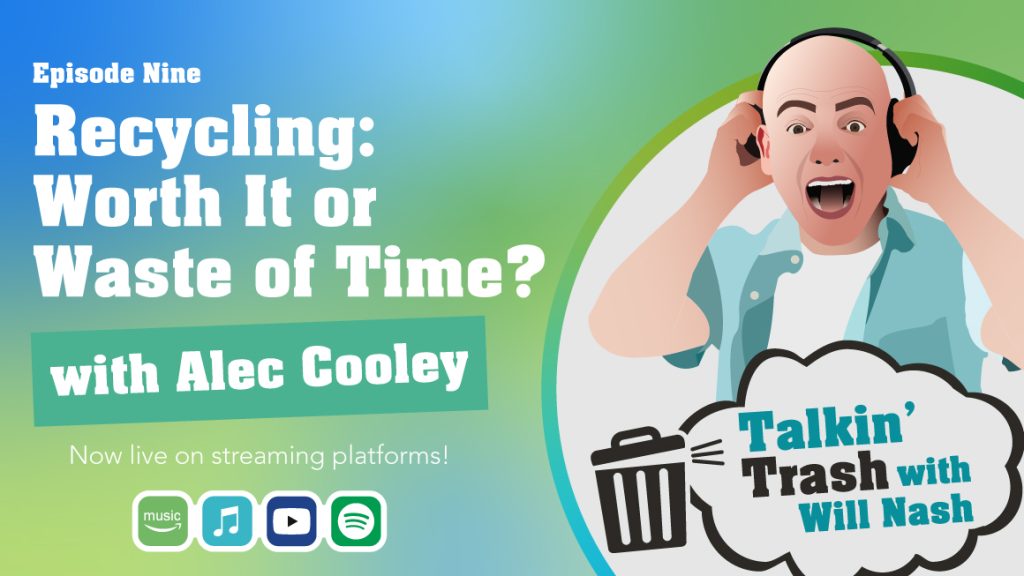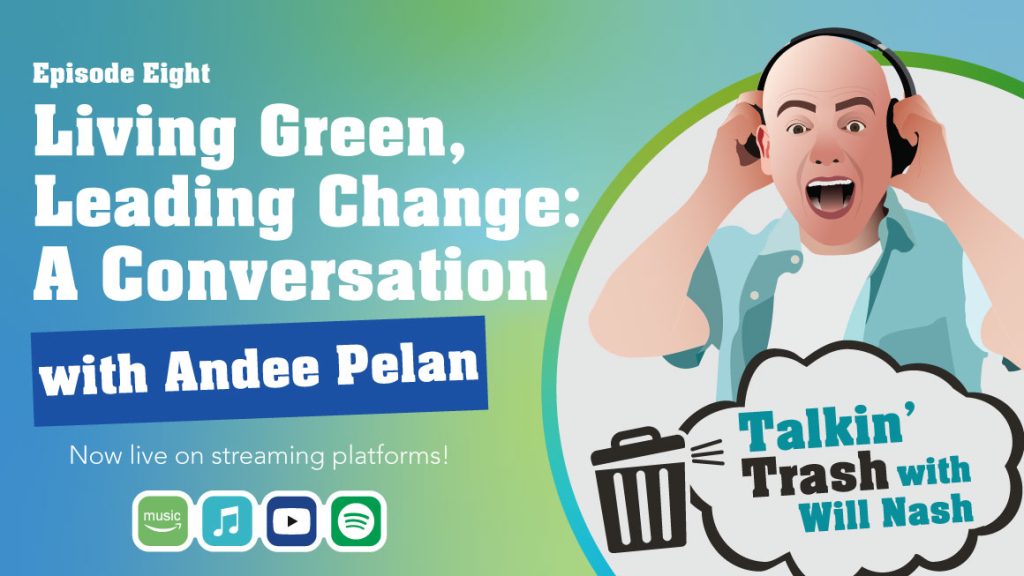Printed Circuit Board (PCB) is used in nearly all electronic products, from pagers, the mouse of a computer to radios and computer systems. A PCB is self-contained boards with interconnected electrical and electronic components. So how are these components recycled? Well, it’s a large and complex process but we’re here to walk you through it!
What is a PCB?
Before we go into the Recycling side of a PCB, let’s discuss further what they are and what they are made up of. PCB supports and connects electronic components using conductive tracks, pads, and features made from copper sheets that are then “printed” onto an electrical insulator that is usually made of a fiberglass epoxy resin. Once the copper sheet adheres to the fiberglass, the circuits are etched out in a design specific to the needs of the designer. The circuits are then coated with a layer of tin-lead to prevent oxidation and in some cases nickel (to prevent the gold and copper from fusing) and gold (because it’s a great conductor). Then, the “green” layer is applied, this layer insulates the copper to prevent it from coming into contact with other metals. The components of the board are then soldered on.
There are different ways to electronically connect a PCB to the circuits, one being to drill tiny holes through the fiberglass and passing through thin metal leads that are soldered to the connection boards in the circuits.
There are three different types of PCBs. Single-sided PCBs only have one layer of all base material on the fiberglass, while double-sided PCBs have layers on both sides of the fiberglass. This is where the tiny holes are used to attach circuits on both sides of the board. The third type is a multilayer PCB, which adds multiple layers to each side of the board, making it muhch more complex.
How are PCB’s Recycled?
There are three different processes that can be used to recycle PCBs; Hydro, Pyro, and Electrochemical. However, the metallurgical industry is looking to branch away from pyrometallurgical processes due to their high energy use and the fact that the metals need to go through additional processes in order to produce purer results. For the purpose of understanding the recycling process, we focus on the main method, Hydrometallurgy, which is used most often.
Before a PCB gets to the processing stage, it must first undergo a size reduction where it is cut up into more manageable pieces. This makes it easier to sort the metal from the ceramics and fiberglass, it also helps to loosen the attached pieces from the board.
After this, the boards must go through a sorting process where undesirable materials are removed. The desired materials are then sent through the leaching process which dissolves the material using water and a solvent, usually an acid.
The most common hydrometallurgy are solvent extraction, ion exchange, and precipitation. For solutions that contain many impure metal ions, solvent extraction, and ion exchange are best suited. Though solvent extraction is best for large scale separation, Ion exchange has the potential to separate 99.99% of rare earth elements, though the process is more expensive than the others.
Solvent Extraction
The metal ions are separated from contaminants, these metals move on through the process and are scrubbed of any impurities and the contaminants are sent for further leaching or disposal. After being scrubbed the metals are stripped of the desired metals, and if needed, are sent to final processes such as ion exchange or precipitation where pure metals are the result.
Precipitation
The metal ions are added to a precipitation agent which changes the material from a liquid to a solid. The liquids and solids are then separated, the liquid material is sent for further processing or disposal and the solids are refined into pure metals.
Ion Exchange
The sorption (when one substance becomes attached to another) of metal ions occurs. Next, an Eluent is added which washes the loaded ion-exchange resins to extract the captured metal ions. These metals are sent down for refining resulting in pure metals and the water solution is sent for further processing or disposal.
These are only three of many processes that can be used for separating metals from other materials and as you can read, they take a lot of work! Precious metals or not, it’s better to have these materials recycled properly instead of contaminating waterways and landfills.
The Value in Electronics Recycling
There is a major potential for profit in electronics recycling! With all the precious metals that are hidden within circuit boards, people aren’t always taking the safest approach to remove them. Some great examples are places like China and Africa. In both countries, children and families work with no safety equipment to remove the lead, gold, copper, and other valuable metals from the E-waste that builds up in their environments.
Unfortunately, most of the E-waste in these countries is sent over from Western countries, even with strict regulations on E-waste leaving its country of origin. Most of this waste ends up in places like Ghana, where it is common for young children to be hired to burn the insulating wire off of copper wires creating a black smoke that is highly toxic.
Due to its ability to create such a large profit, E-waste in China has become the first choice of business for many. These businesses are built at the expense of children and families who are hired to make a small amount of money sorting the materials. Most of the children suffer from lead poisoning and are also exposed to chemicals such as Cadmium, Mercury, and Chromium.
These problems could be avoided if e-waste were to be recycled properly in its country of origin as intended. Not only are these materials valuable in every country, but this practice discourages the treatment of low-paid employees overseas, and encourages safe and roper sorting of these valuable materials.
—
The main reason that we are seeing an abundance of E-waste globally is that everything is replaceable, now more than ever. When the latest version of popular technology comes out (such as a new phone or tablet) many people are quick to throw away the old with no thought about what will happen to it. Tech companies also encourage this, since your choice to upgrade makes them more money. Speak to your Recycling companies to inquire about their methods of disposing of e-waste. Many stores and corporations also offer e-waste drop-offs, allowing you to bring your old devices to be recycled properly. It is extremely beneficial to use these outlets rather than throwing old devices in the trash, to avoid contributing to the mass of e-waste in the landfills that is damaging our planet.
Sources
https://bayareacircuits.com/printed-circuit-board-finishes/
https://learn.sparkfun.com/tutorials/pcb-basics
http://web.mit.edu/dsadoway/www/67.pdf
https://books.google.ca/books?id=5Ih4CgAAQBAJ&pg=PA134&lpg=PA134&dq=circuit+board+Recycling+with+wet+process&source=bl&ots=h96C6GntSl&sig=XSjsM4mbdbjOriuDeqJSqW2gYlg&hl=en&sa=X&ved=0ahUKEwj7jMXGr6_XAhXM3YMKHZgsDpQQ6AEIVjAL#v=onepage&q&f=true
https://www.lacitysan.org/index.htm#Zerowaste
https://www.smithsonianmag.com/science-nature/burning-truth-behind-E-waste-dump-africa-180957597/



